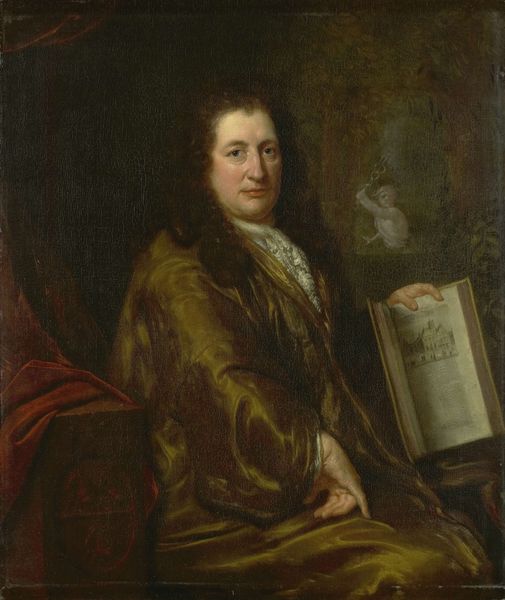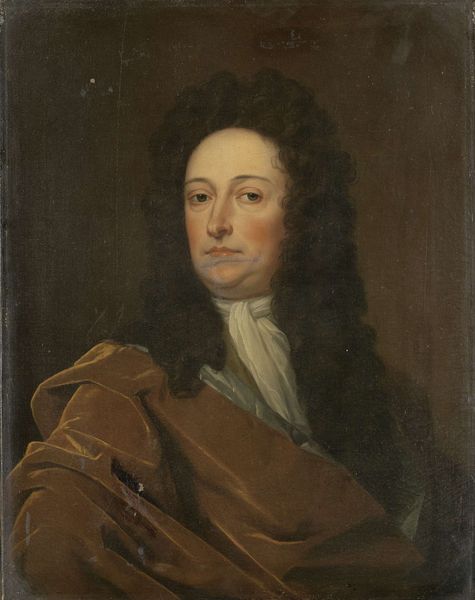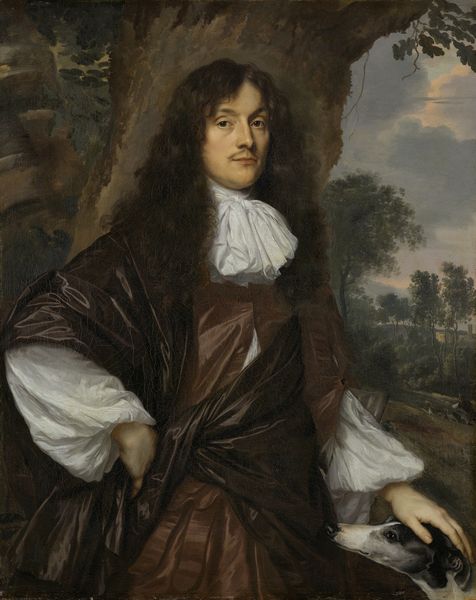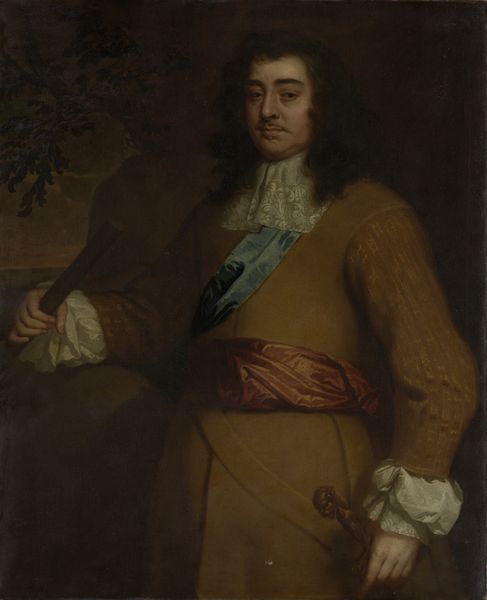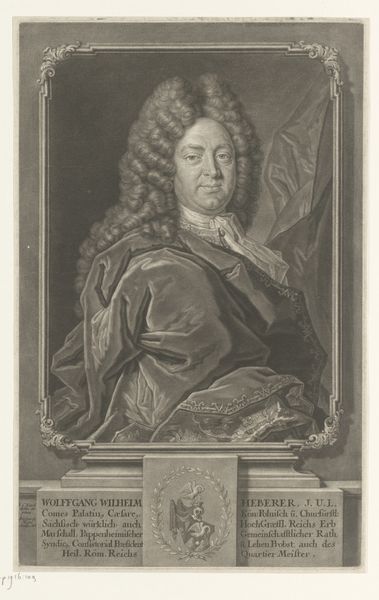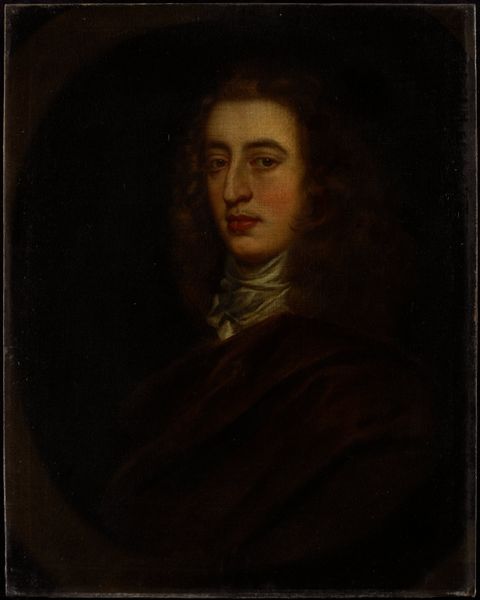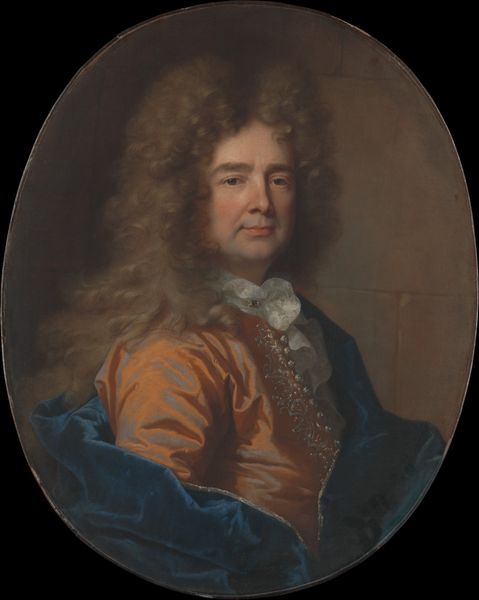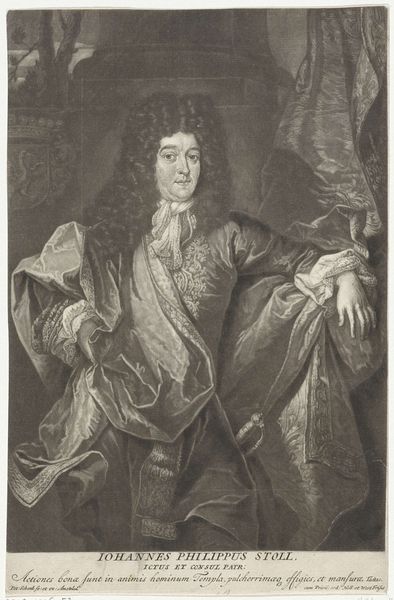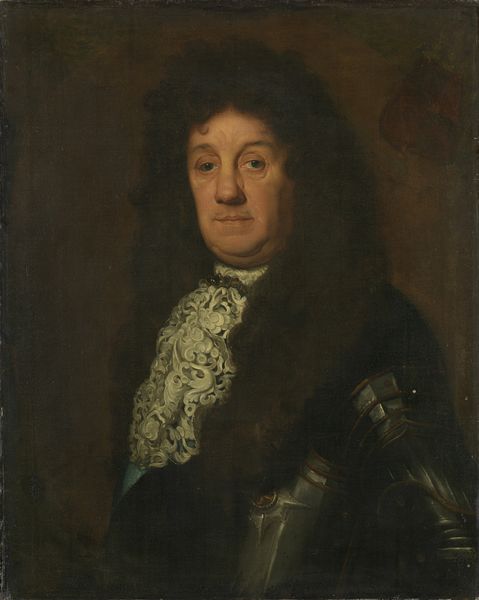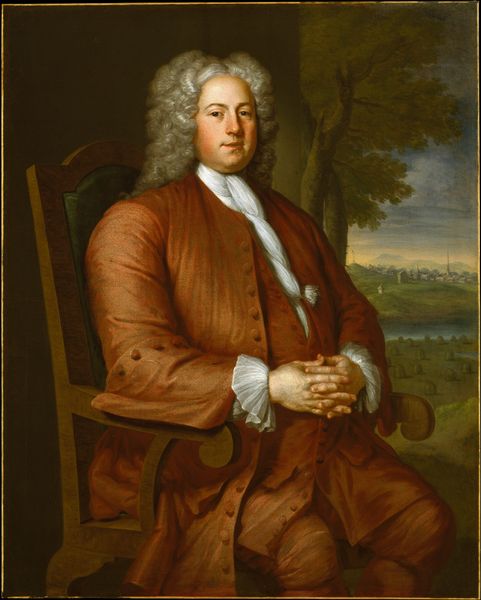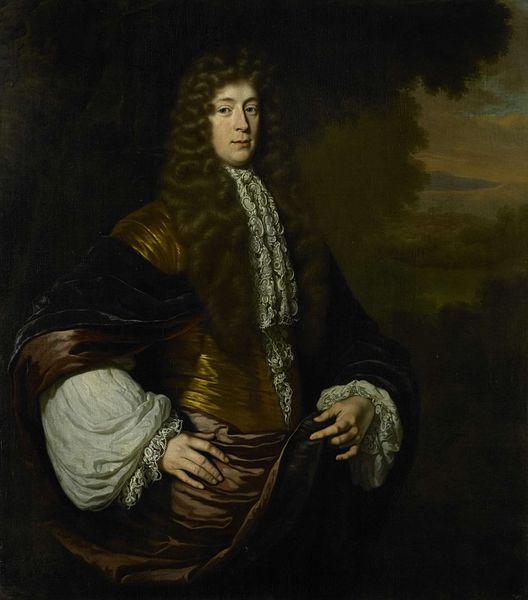
Portrait of François Leydecker (1650-1718). Delegate to the Court of Audit for Zeeland c. 1690
0:00
0:00
oil-paint
#
portrait
#
baroque
#
oil-paint
Dimensions: height 86 cm, width 67.5 cm, depth 6 cm
Copyright: Rijks Museum: Open Domain
Curator: This oil-on-canvas artwork, likely created around 1690, depicts François Leydecker. He served as Delegate to the Court of Audit for Zeeland. Though the artist remains anonymous, this baroque-style portrait certainly captures a moment in Dutch history. Editor: The first thing that strikes me is how muted the colors are—primarily browns and tans. There's a sense of quiet confidence about the subject, emphasized by the soft, diffused light. But does that stillness suggest something deeper, perhaps a world-weariness inherent to such a powerful role? Curator: Precisely, the artist has done an excellent job conveying his stature through both color and form. Observe the subtle use of impasto, particularly on the drapery. Those stripes draw the eye across his torso, accentuating his size, which, by extension, visually enhances his perceived authority. Editor: And what of the coat of arms discreetly positioned in the upper right corner? Is that meant to reinforce Leydecker's established social position or subtly negotiate for greater power? The very presence of the portrait also tells a tale about the burgeoning role of imagery as a means of solidifying identities. Curator: The heraldry undeniably serves to emphasize his lineage and place within the social hierarchy of the time, but I wouldn't presume it’s necessarily about seeking more power. Instead, look closely at the lines of his body. He exudes a rather relaxed pose with his hand inside the coat. I believe it is less about ambition and more about the comfortable confidence that comes from his status in society. Editor: Perhaps so. Yet the political function of portraiture in this era shouldn't be overlooked. Leydecker wasn’t merely being represented. He was crafting a version of himself for public consumption, wasn’t he? One sanctioned and idealized for generations to come. Curator: Perhaps you are correct. Yet the composition—those dark, weighty colors, in conjunction with the warm tones of the face and those small but clear features, make it clear that identity is crafted here. It might say more about being than about doing. Editor: An insightful observation, that. Seeing it this way brings an exciting tension, I have to admit. Curator: Indeed, sometimes exploring a seemingly static portrait leads to dynamic observations. Editor: Very true; looking through these very focused lenses, each brushstroke becomes much more significant.
Comments
No comments
Be the first to comment and join the conversation on the ultimate creative platform.
